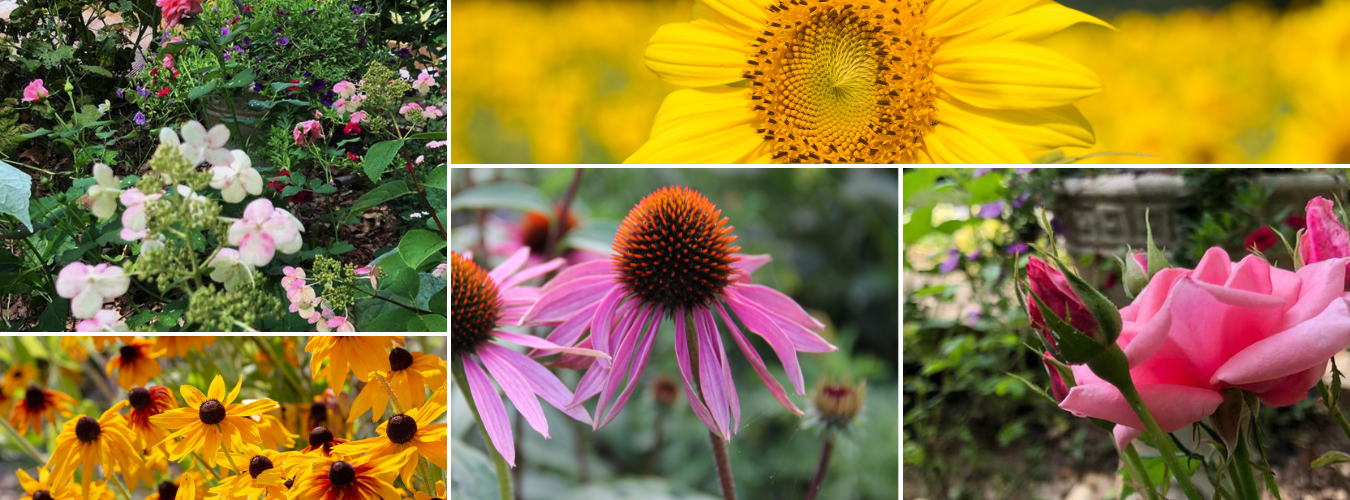Alternatives to Knockout Roses:
I have never bought a knockout rose, and I never shall. Knockout roses may have knocked out a few of the diseases that plague many roses, but unfortunately, they simultaneously also knocked out the fragrance, too.
That being said, I don’t buy hybrid tea or fussy roses, either. I’m not a fussy gardener. I am a true cottage gardener. My garden is a toss-up of roses, vegetables, herbs, strawberries, grapes, muscadines, perennials [like daisies, back-eyed Susans, sunflowers, and hardy hibiscus], a few old, favorite annuals [like impatiens and zinnias], bulbs [like irises, daylilies, and daffodils], and a few biennials [like hollyhocks and foxgloves].
In old France, this type of kitchen/cottage garden was callled a potager. In old England, this type of garden was called a cottage garden or a kitchen garden.
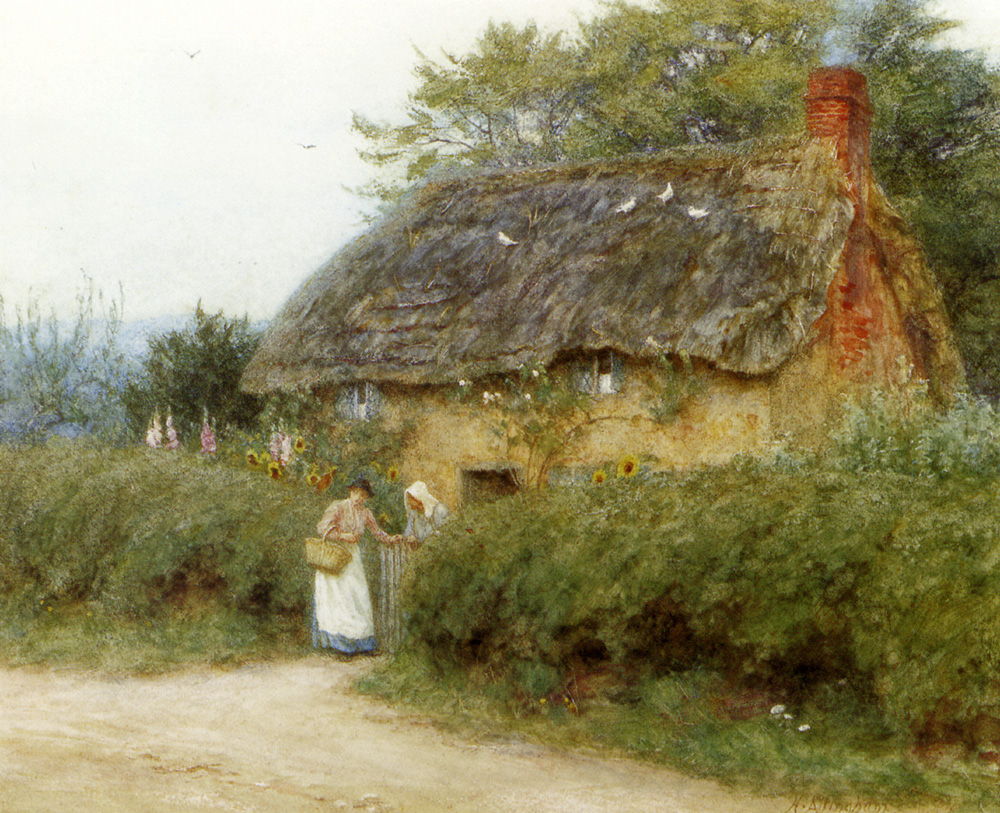
Garden Painting b Helen Allingham
About 25 – 30 years ago, I began buying and growing Old Garden or Antique or Heirloom Roses. The cottage gardens of our grandparents and great-grandparents nearly always had a climbing rose or 2. Most of those antique roses have survived their plantings around old, old cemeteries, where they received little or no care. These old cemetery roses have proven themselves to be hardy and almost disease-free. Most importantly, most of them are bathed in the fragrances of old, grandma roses
.
Here are some of the roses that I grow in my current garden and/or have grown in my past gardens. Dates of origin in the comments.

Cécile Brunner Rose – Image Credits Wikimedia
Cécile Brunner Rose – Cultivated in 1825 — The climber followed a few years later, in 1894. I grew the climber in my Mississippi garden, and I hope to grow it again.

Don Juan Rose – Image Credit David Austen Roses
Don Juan is a fragrant climbing rose that has a bloom that rivals that of hybrid teas. It is disease-resistant, fragrant, and a fast grower. It is not an antique rose, but I’d say that it is an old, established variety. It was cultivated in 1958.

The Fairy Rose – Image Credit Wikimedia Commons
The Fairy Rose – Image Credit Wikimedia
The Fairy is a tiny rose [about 2’ – 3′ tall] with tiny pink flowers. It was first cultivated in 1932. While this little girl does look like a bush filled with little fairies, it is not fragrant. Yet, it is great as a garden filler. It is a bit like a spattering of baby’s breath–but the blooms are larger, and they are a delicate, light pink.

Gene Boerner Rose – Jacki Kellum Garden
Jackson & Perkins introduced Gene Boerner in 1968, and while it is not actually an antique rose, is disease-resistant. I love its old-fashioned look. Gene Boerner has a slight fragrance, and it is nearly thorn-free.

Just Joey Rose – Image Credit Wikimedia
Just Joey is a hybrid tea rose that is much more resistant to diseases than most hybrid teas. I have grown Just Joey before, but I hardly ever grow the more finicky hybrid teas. Just Joey was cultivated in 1972, and its apricot coloring is a refreshing variation in most gardens. Better Homes and Gardens lists Just Joey as one of the 17 most fragrant roses. Here
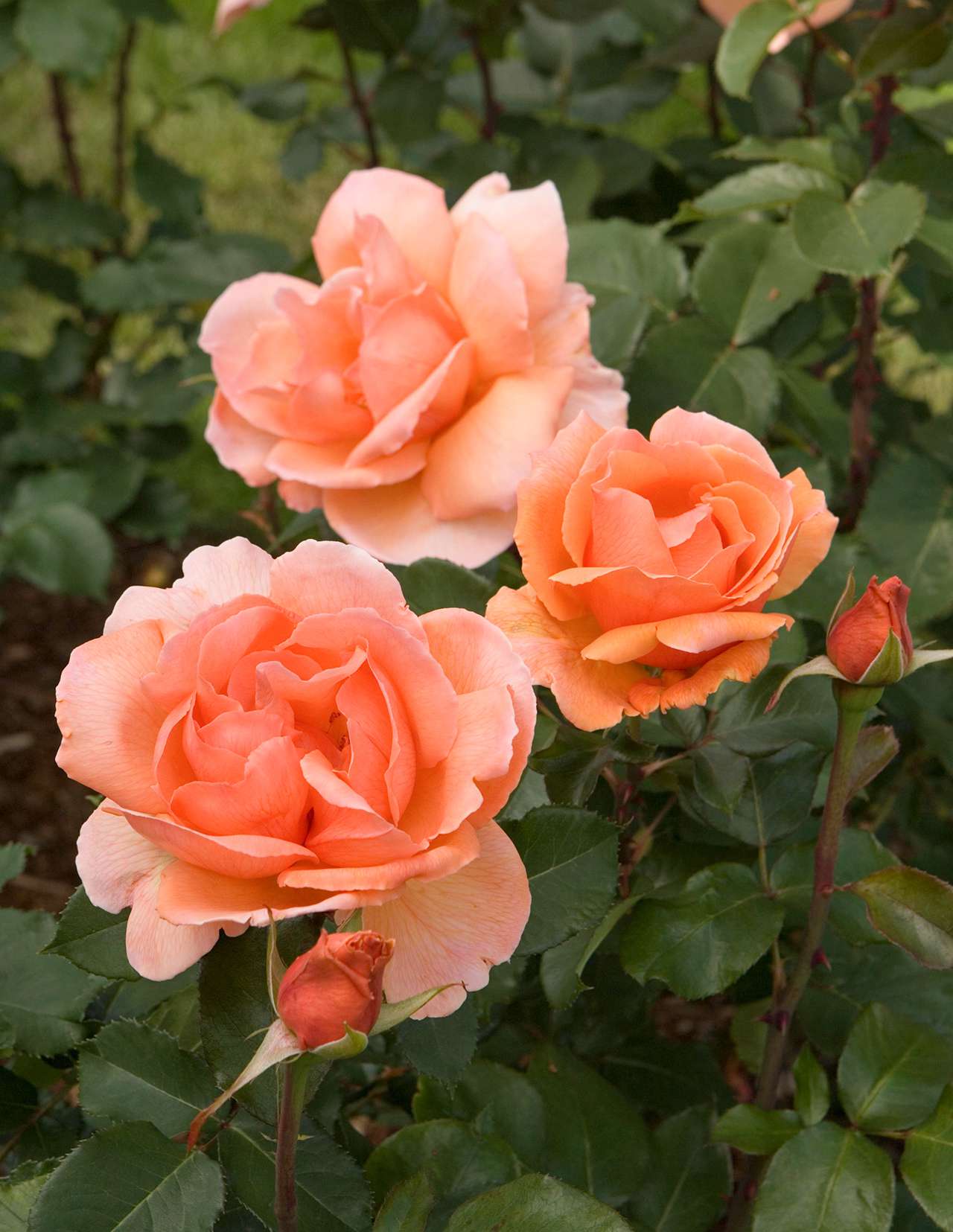
Just Joey above
Lady Banks Rose – Image Credit Wikimedia

Lady Banks Rose – Image Credit Wikimedia
Lady Banks or Banksia Rose was first cultivated in 1807. This old gal is the Queen of Southern gardens.

Louise Odier Rose – Image Credit Wikimedia
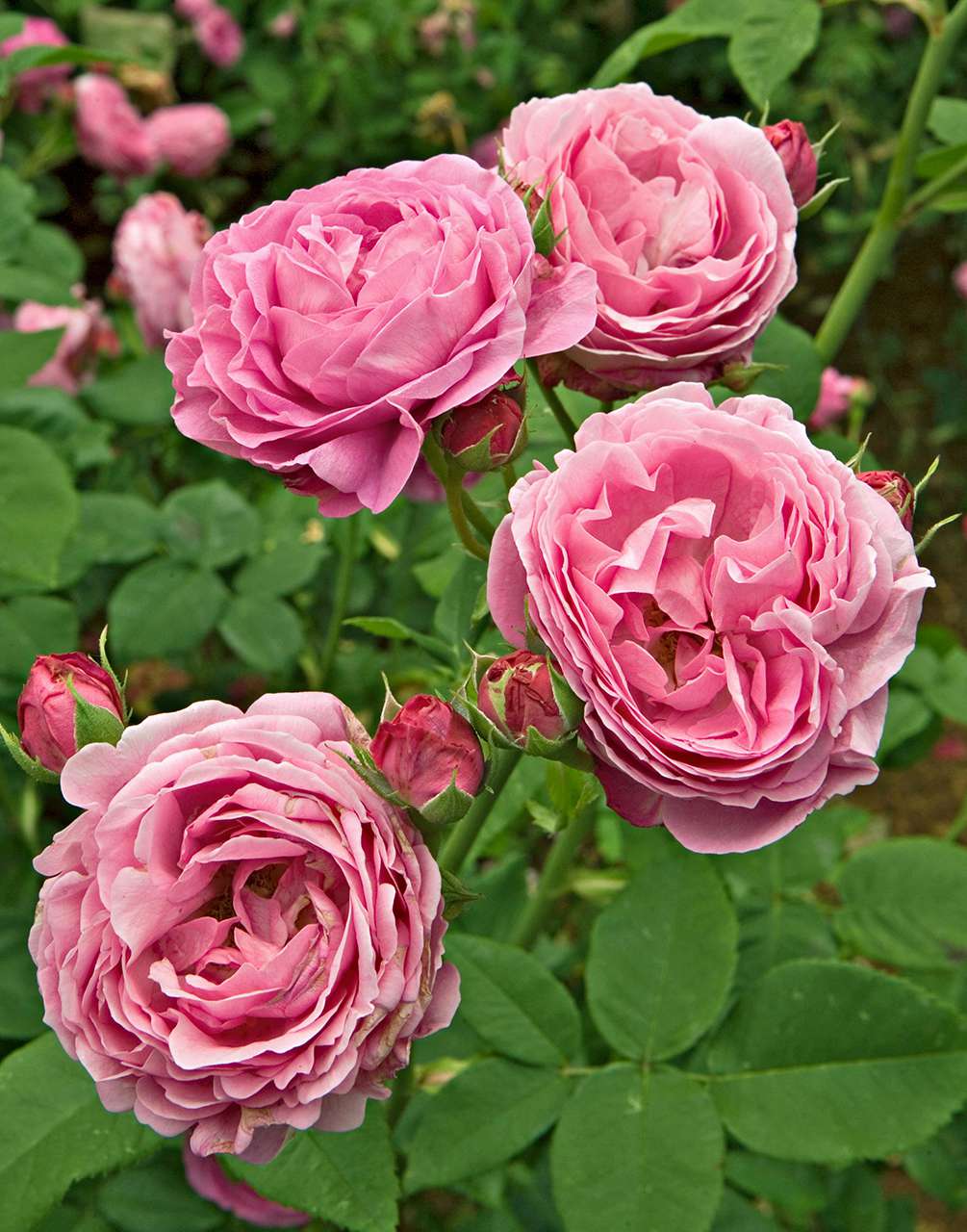
Louise Odier Rose – Image Credit BHG online
Better Homes and Gardens lists this rose as one of the most fragrant of roses. I agree. Louise Odier was first cultivated in 1851, and it is a feast of fragrance. It is a short climber and has a wonderful old-fashioned blossom.

Mutablis Rose – Image Credit Jackson Perkins
Mutablis Rose – Cultivated in 1894. This rose is fabulous when it is allowed to grow with wisteria. One year in Mississippi, my wisteria carried my mutablis rose blossoms up and over my house. They put on a show.

Sunblush Rose in Jacki Kellum Garden
Sunblush Rose [The Champion by Garden Debute] is a new variety that reminds me of the old Mutablis rose that I have grown for years. It was cultivated about 2 years ago. It has a fabulous, rose-like fragrance, and it is very resistant to diseases. “Bi-colored 2.5-inch flowers repeatedly bloom from late spring through summer. Yellow flower buds with pink striations open to reveal soft, yellow petals with pastel pink edges before finally turning deep pink. Reaches 4 feet tall and wide.”

Thrive Lemon Rose – Jacki Kellum Garden
Thrive Lemon Rose is a fairly new rose cultivar. It has a fabulous, rose-like fragrance, and it is very resistant to diseases. I bought this rose bush 3 years ago, and I have moved it 5 times. It seems to resist all of the trauma that I throw at it.
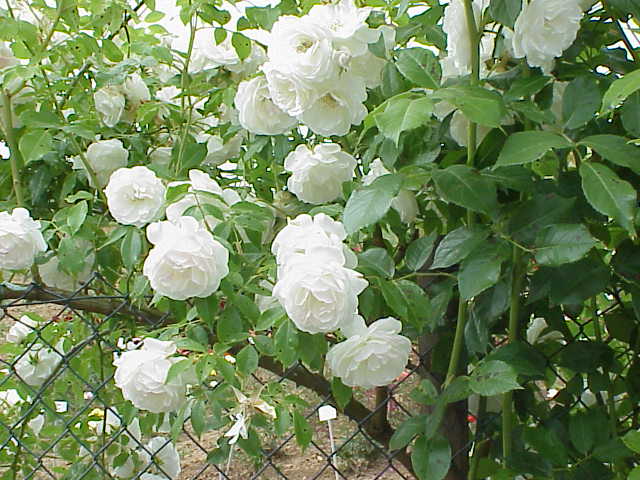
Iceberg Climbing Rose – Image Credit Wiimedia
Iceberg can be grown as a bush variety or as a climber. I grow the climber, and it has nearly the same habit as Zephirine Drouhin. It was cultivated in 1958. It has very few thorns, and because of that, it is a good rose to plant over an entryway. This morning, my Iceberg had a delicately sweet rose fragrance.
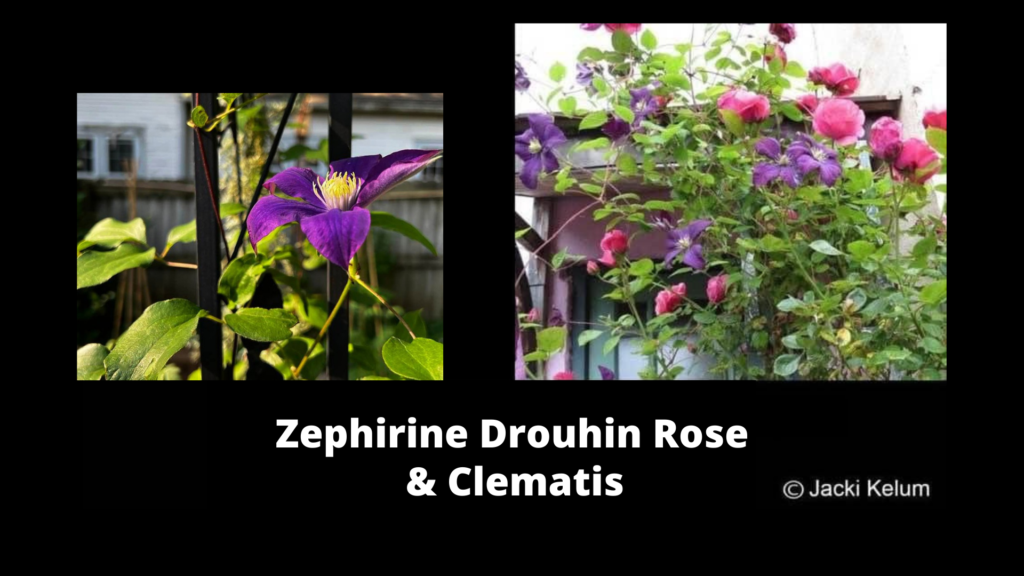
Zephirine Drouhin is a climber, and it originated in France in 1868. It is not super fragrant, but it has hardly any thorns. It is also highly resistant to diseases. I plant Zepherine Drouhin with my climbing vegetables–like pole beans–and also with clematis. Zephirine Drouhin is stunning when it grows and blooms simultaneously with blue and purple clematis plants and with other blue and purple plants, too.

Jacki Kellum Garden
But during its peak blooming season [May in Zone 7a], Zephirine Drouhin is glorious all by itself.
Disease-Resistant Roses: Focus on Antique Roses
